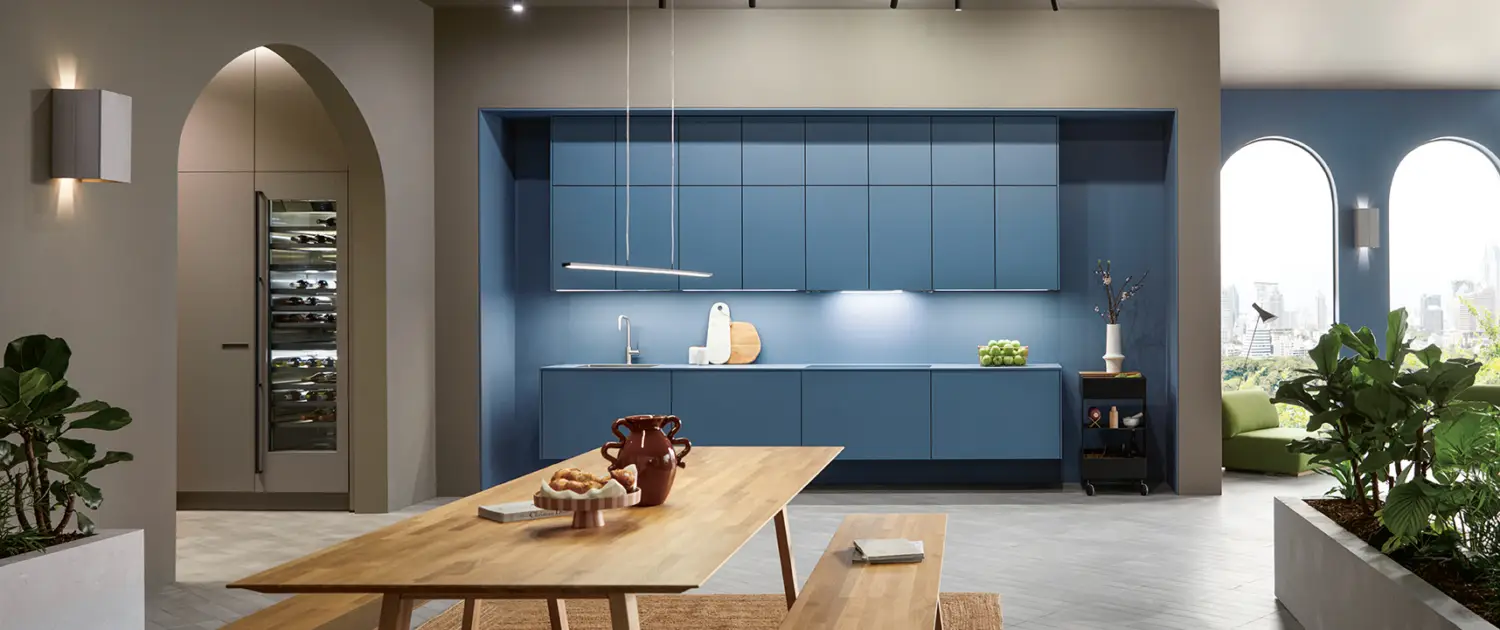
Creating an ergonomic kitchen layout involves designing a workspace that promotes comfort, efficiency, and accessibility. Understanding how people interact with their surroundings is critical to achieving an optimized design that caters to users’ physical attributes and habits. By prioritizing user experience and integrating thoughtful details, you can craft a comfortable and productive environment within your kitchen. Working with kitchen companies in Dubai can facilitate the planning and execution stages, offering valuable insights and resources throughout the project. Below are several key factors to consider when designing an ergonomic kitchen layout.
Prioritize workflow:
A well-designed kitchen layout revolves around the concept of workflow, ensuring that essential tasks such as food preparation, cooking, and cleanup flow smoothly and efficiently. Adopt a triangular layout, with the sink, stove, and refrigerator positioned in close proximity to form a cohesive work triangle. Minimize unnecessary steps and obstacles between these key elements to facilitate effortless movement and reduce fatigue during meal preparation.
Optimize counter heights:
Tailoring counter heights to accommodate the needs of different users is essential for ergonomic kitchen design. Standard countertop height is typically 36 inches, but considers varying heights to accommodate individuals of varying heights and preferences. Lower counters or adjustable countertops can accommodate seated tasks such as chopping or kneading, while standard-height counters are ideal for standing tasks like food preparation and cooking.
Maximize storage accessibility:
Efficient storage solutions are integral to ergonomic kitchen design, ensuring that essential items are easily accessible without unnecessary reaching or bending. Incorporate ample storage options such as deep drawers, pull-out shelves, and lazy Susans to optimize organization and minimize clutter. Store frequently used items within arm’s reach, while reserving higher or lower cabinets for less frequently accessed items.
Integrate ergonomic appliances:
Selecting ergonomic appliances can enhance comfort and convenience in the kitchen. Choose appliances with user-friendly features such as easy-grip handles, intuitive controls, and adjustable settings. Consider installing wall-mounted ovens or microwave drawers at ergonomic heights to minimize bending and lifting when accessing hot dishes or reheating leftovers.
Illuminate with precision:
Proper lighting is essential for creating a safe and ergonomic kitchen environment. Incorporate a combination of task lighting, ambient lighting, and accent lighting to ensure adequate illumination throughout the space. Install under-cabinet lighting to brighten work surfaces and minimize shadows, and incorporate adjustable fixtures to accommodate varying tasks and preferences.







